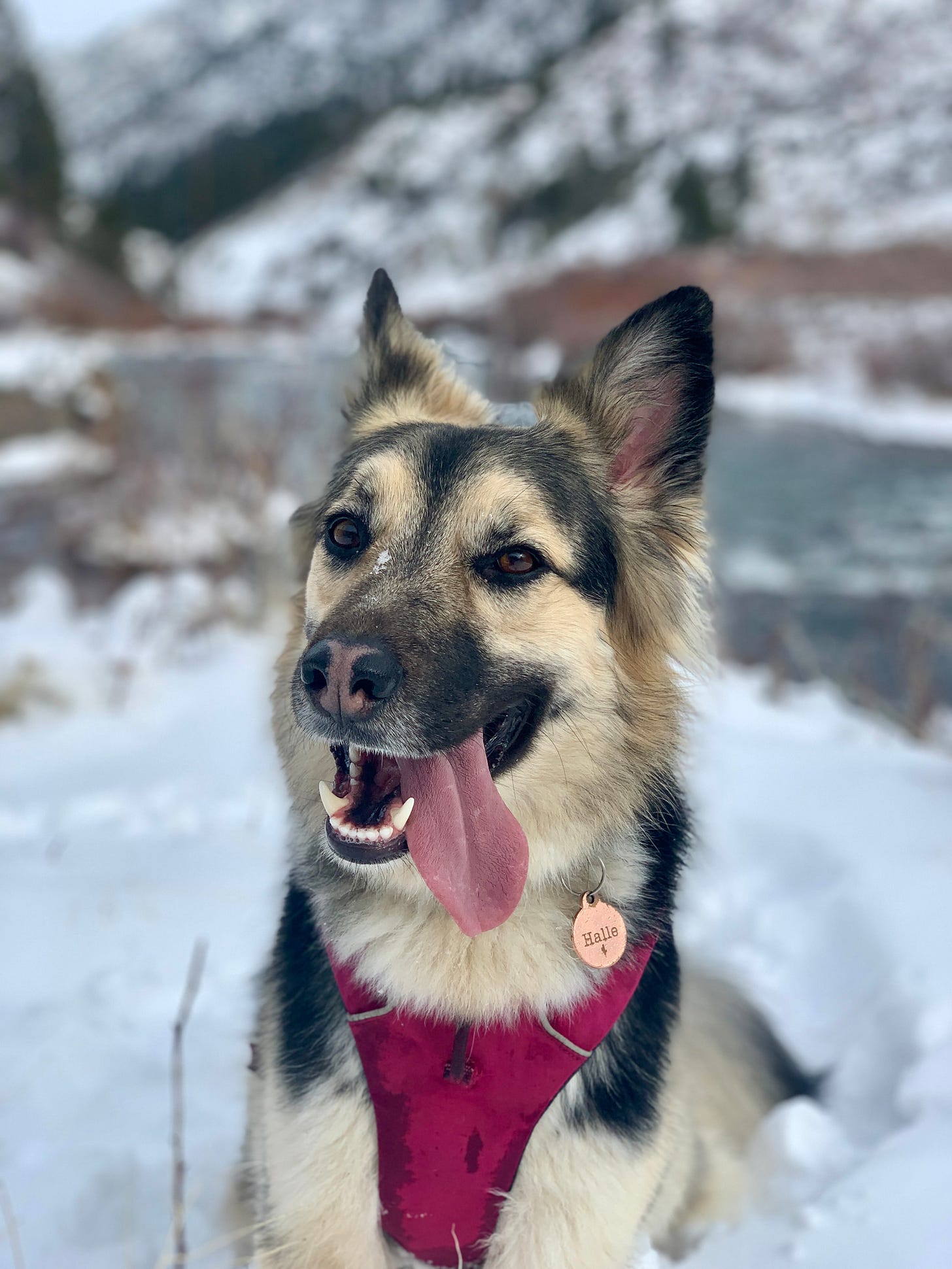Can we teach dogs mindfulness?
Some thoughts on set ups, coping behaviors and medication to build calm and confidence
I just finished a book called Unwinding Anxiety, by psychiatrist and neuroscientist Judson Brewer. In short, it’s on how our brains form habits, including repetitive thought loops of worry and anxiety.
Feeling anxious, for example, can lead to overthinking, which can in turn lead to more anxiety, and so on. To help readers and patients map these habits, Brewer uses a framework consisting of a trigger, a behavior, and a result. Here’s habit loop relevant to my life:
Trigger: Feel anxious about upcoming event
Behavior: Plan out every possible way the event could pan out
Result: Feel more anxious
Brewer writes that many anxiety-perpetuating habits can be addressed through mapping our behavior patterns, like the example above, and becoming more aware about how we feel in the moment when we’re engaged in those loops. Gradually, we grow disenchanted with our habits by realizing that they’re not rewarding to us. We can also learn more inherently rewarding responses such as curiosity and mindfulness. He cites successes with patients and promising research findings.
I’ve appreciated his simple, research-based approach for retraining my own brain. Of course, I’ve also wondered: can something similar be used to help dogs?
Here’s one my dog’s habit loops:
Trigger: Strange dog (big, mixed, feelings about these)
Behavior: Stare, lunge toward, and/or bark
Result: Strange dog goes away/keeps walking down the street (and Halle has relief from big feelings)
Using this framework, it’s easy to see why reactivity is self-rewarding and a hard habit to break. Once a dog has learned that their reactivity appears to “work”—the dog across the street keeps walking away, for example (dogs are not good at correlation versus causation…)—then that behavior becomes their go-to habit.
Obviously, asking my dog to map out her reactive behavior is not possible. But some dog training programs do, in a way, try to inspire canine mindfulness. Dog trainer Grisha Stewart told me, in an interview for my reactive dog story at Outside, that her Behavior Adjustment Training approach is basically mindfulness for dogs. By using set ups that create sufficient distance between dog and trigger, the dog can learn about the trigger and practice calmer behaviors, like sniffing and exploring the environment.
The challenge, I’ve found, is that using a BAT-type approach requires perfectly controlling the environment so that your dog remains calm throughout the session. Unfortunately, I don’t have access to a large private property and lots of chill helper dogs.
Further, Halle is also pretty prey-driven, which is its own habit. When I’ve tried to do BAT-inspired training at the park, Halle just fixated on squirrels and often didn’t even look at dogs. I, sadly, can’t tell the rodents to leave us alone while we are training. For now, BAT feels off the table.
Another promising training method I’ve seen recently is Alex Lato’s fear reactivity protocol, which teaches coping behaviors—the dog performs a behavior, which then results in the trigger going away. It seems to build a new habit for the dog and teaches them that they are safe by their handler’s side and have no need to react. According to Lato, with practice, the technique builds confidence, and even curiosity about whatever the dog finds scary.
I’ve also tried some of Leslie McDevitt’s Control Unleashed exercises, which are designed to help with easing those big feelings. Halle can take a breath on cue and she likes to play the Look At That game, looking at the person or dog and then looking back to me for a cookie.
But some dogs, possibly Halle included, may simply be too stuck in a reactive mindset for training alone to help. Especially since we can’t teach dogs to observe their thoughts without reacting to them or to write down their reactive habit loops, these dogs may need pharmacological assistance.
So far, Halle hasn’t responded well to medication. The first one we tried made her sluggish and killed her appetite (which, in turn, made training harder). But we are trying a new medicine at the recommendation of a veterinary behaviorist.
The biggest hurdle for me, now, is my own dog training habit loop:
Trigger: Worrying about my dog’s behavior
Behavior: Scouring the internet for information about additional training protocols I could try (instead of just sticking to one consistent training routine)
Result: Feeling overwhelmed and anxious
Sometimes, my habit gathering more information is problematic and unrewarding (see my post from last year on my Instagram habit). The journey for doggy and human mindfulness continues.




